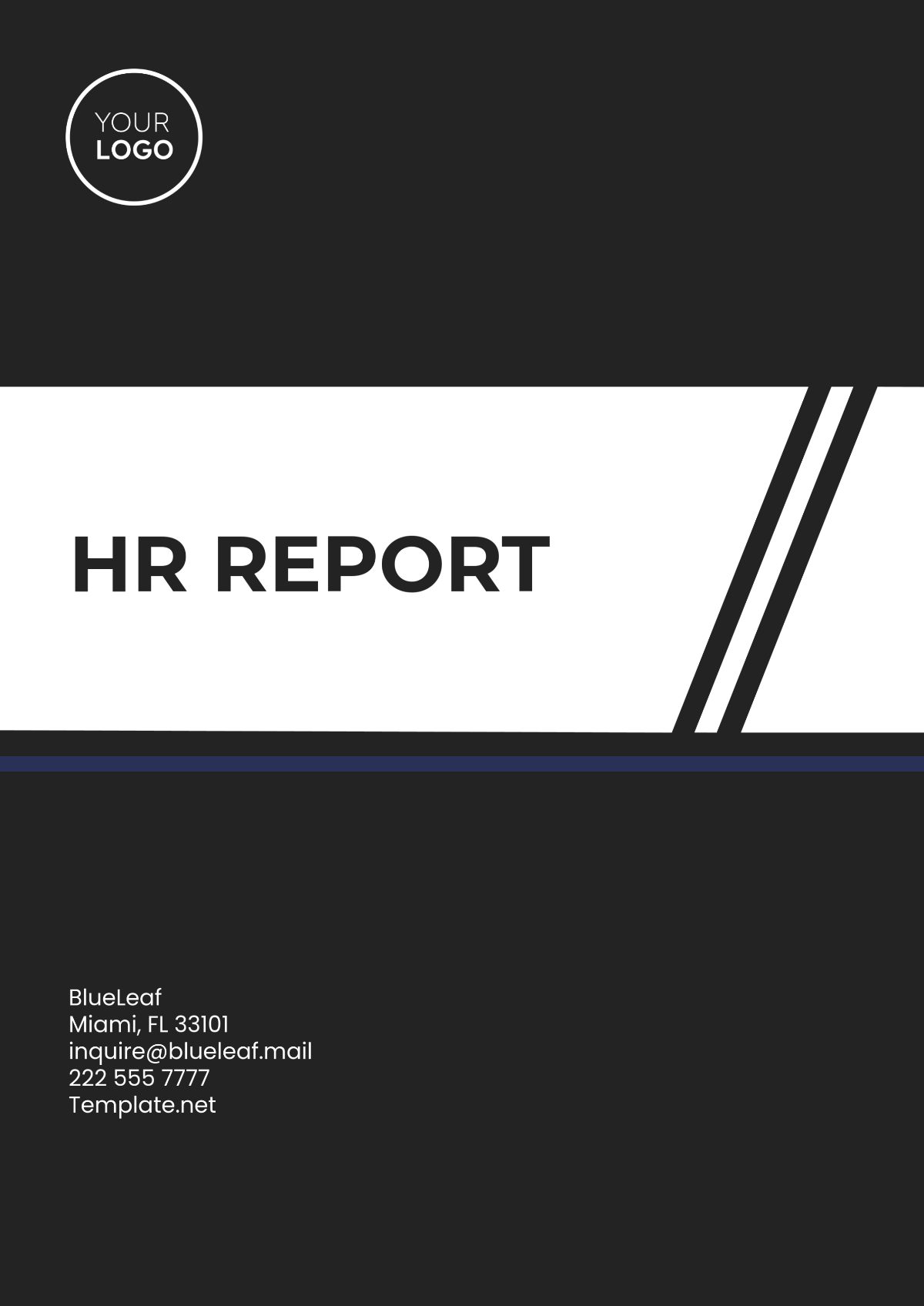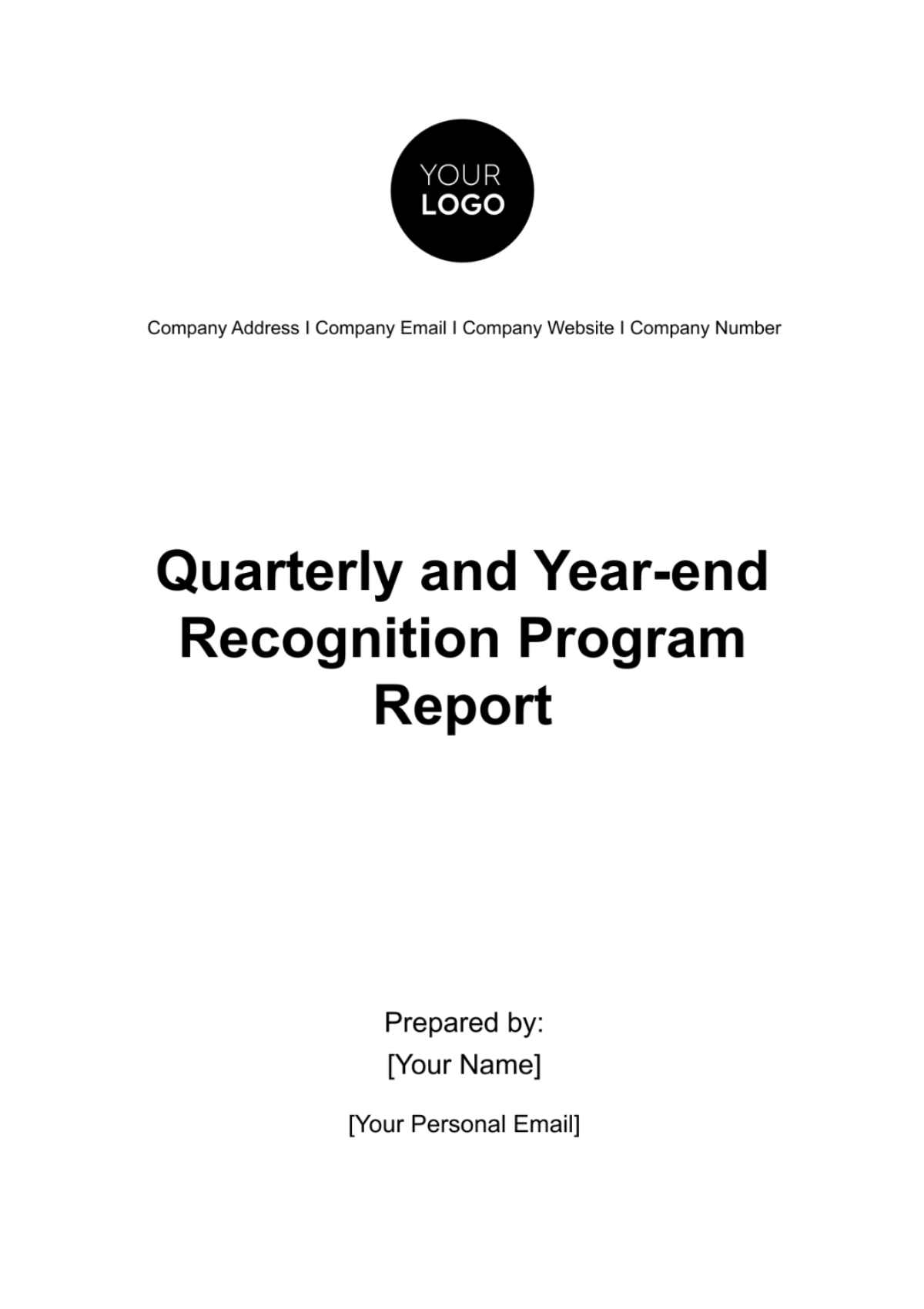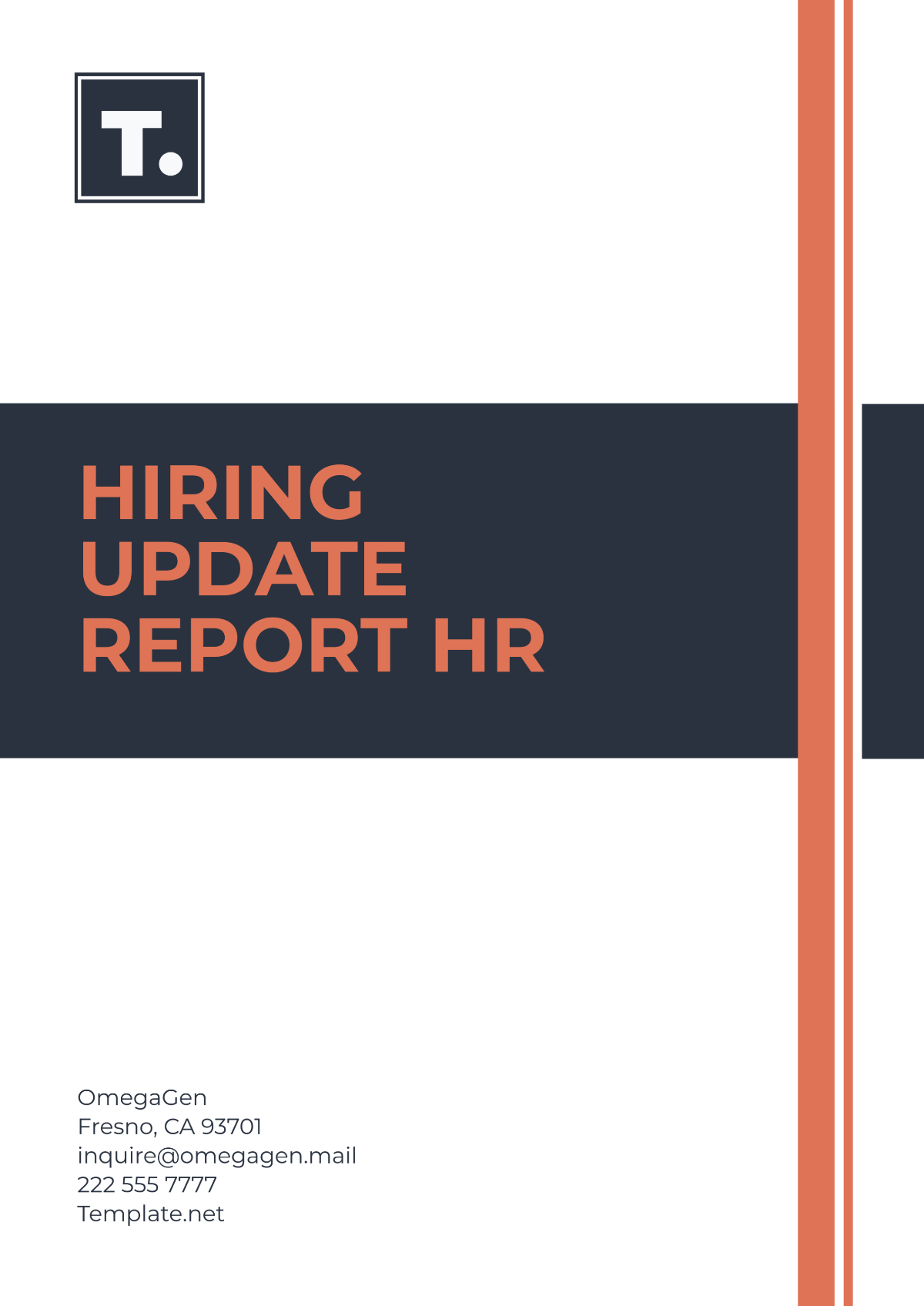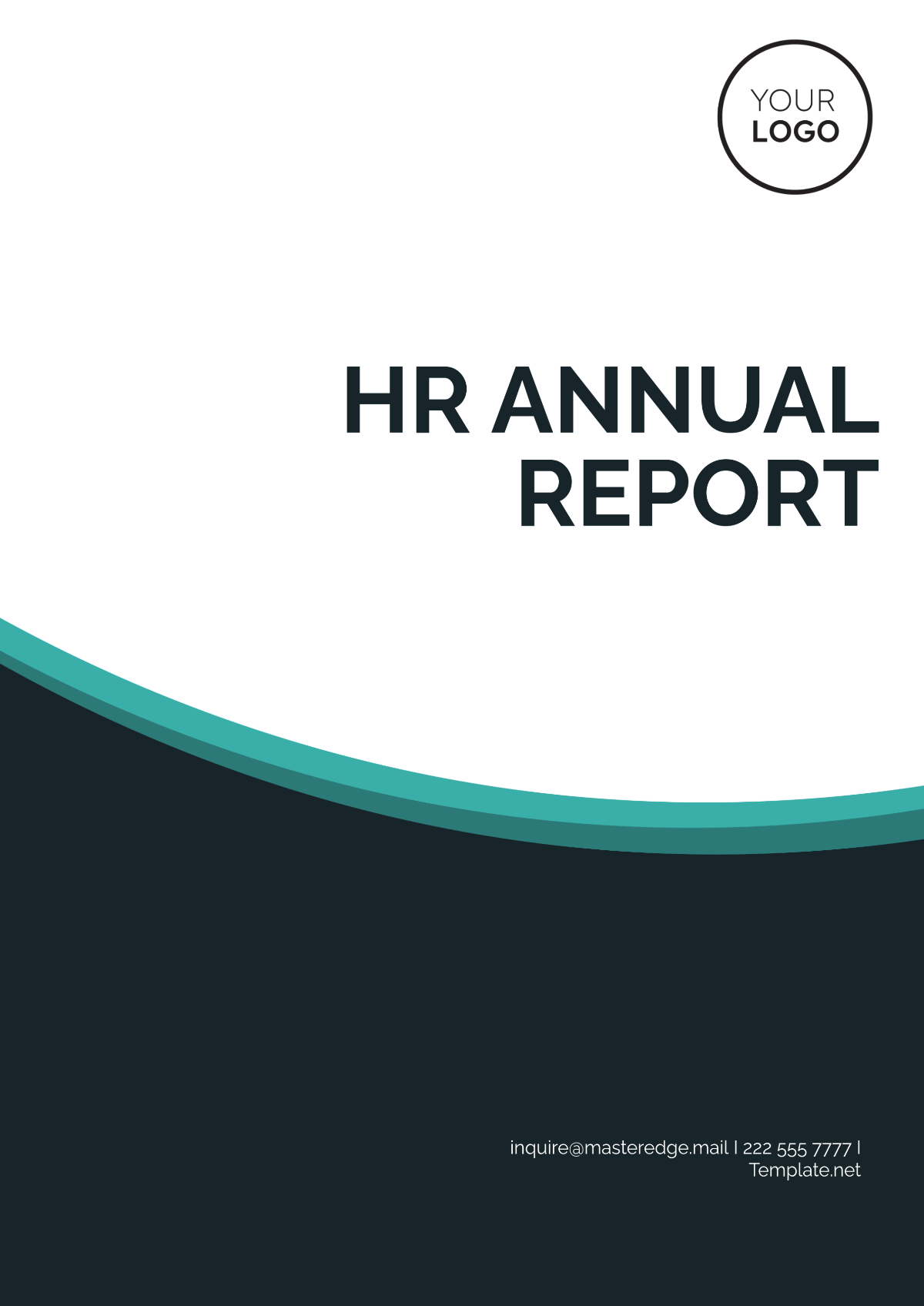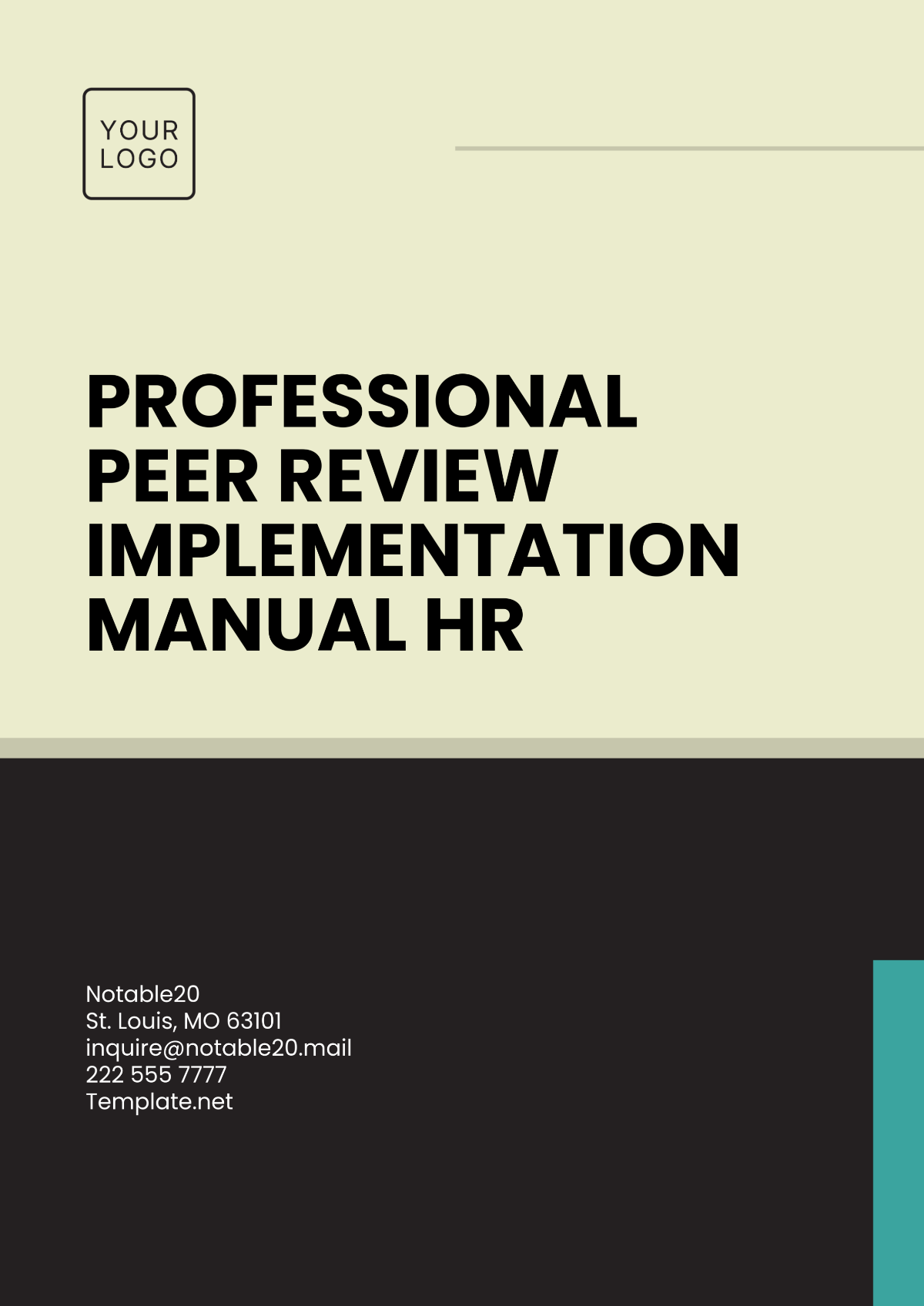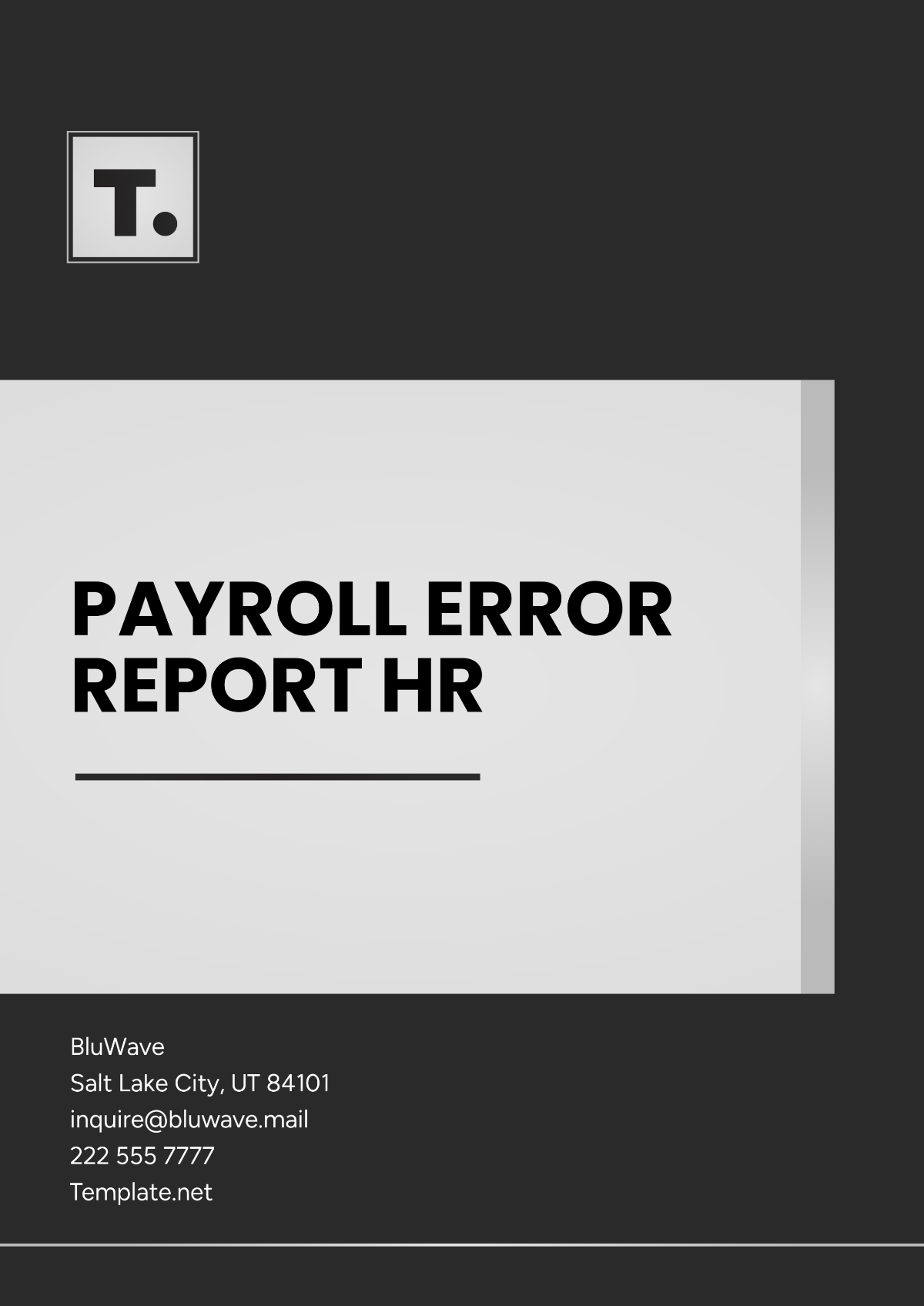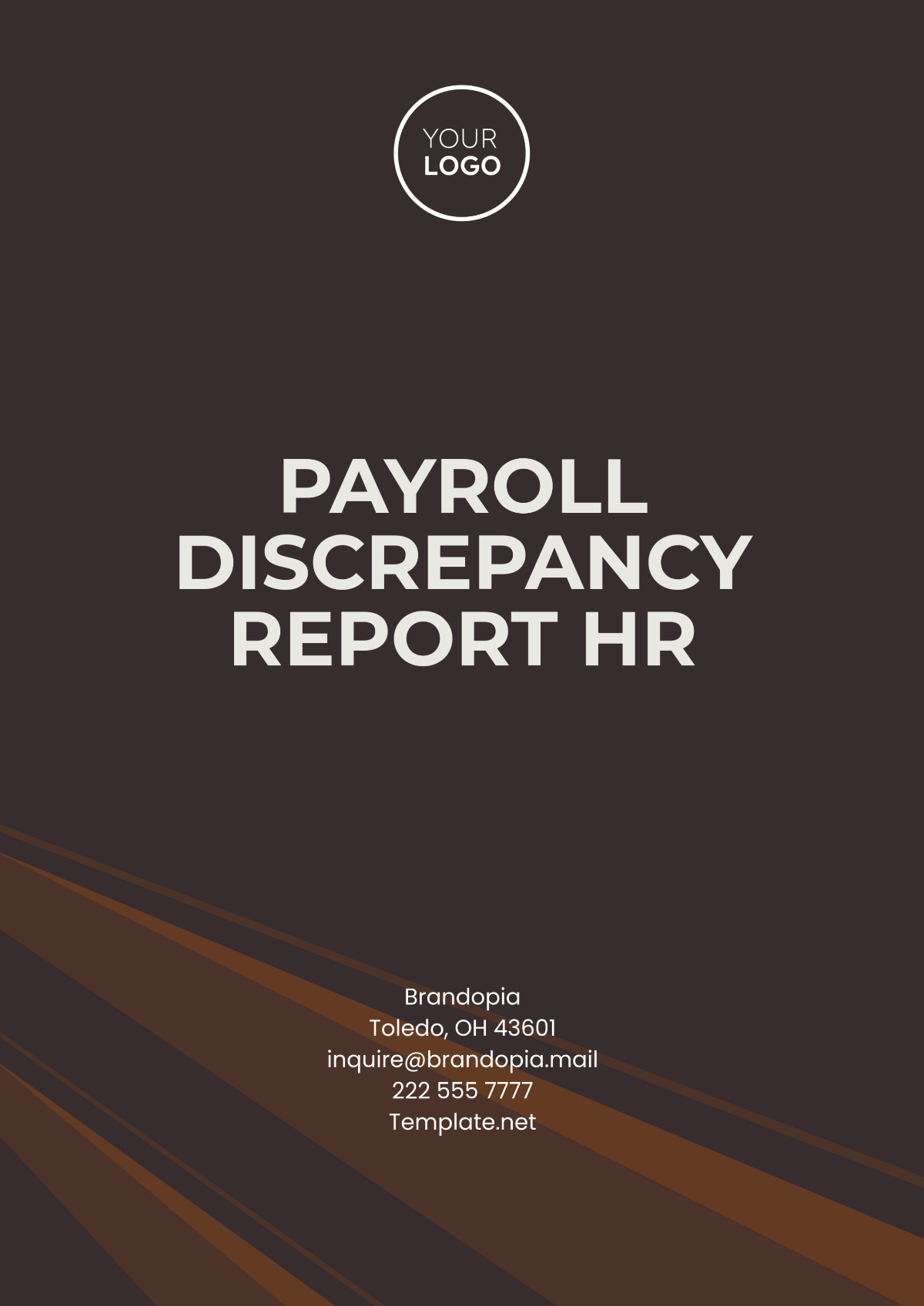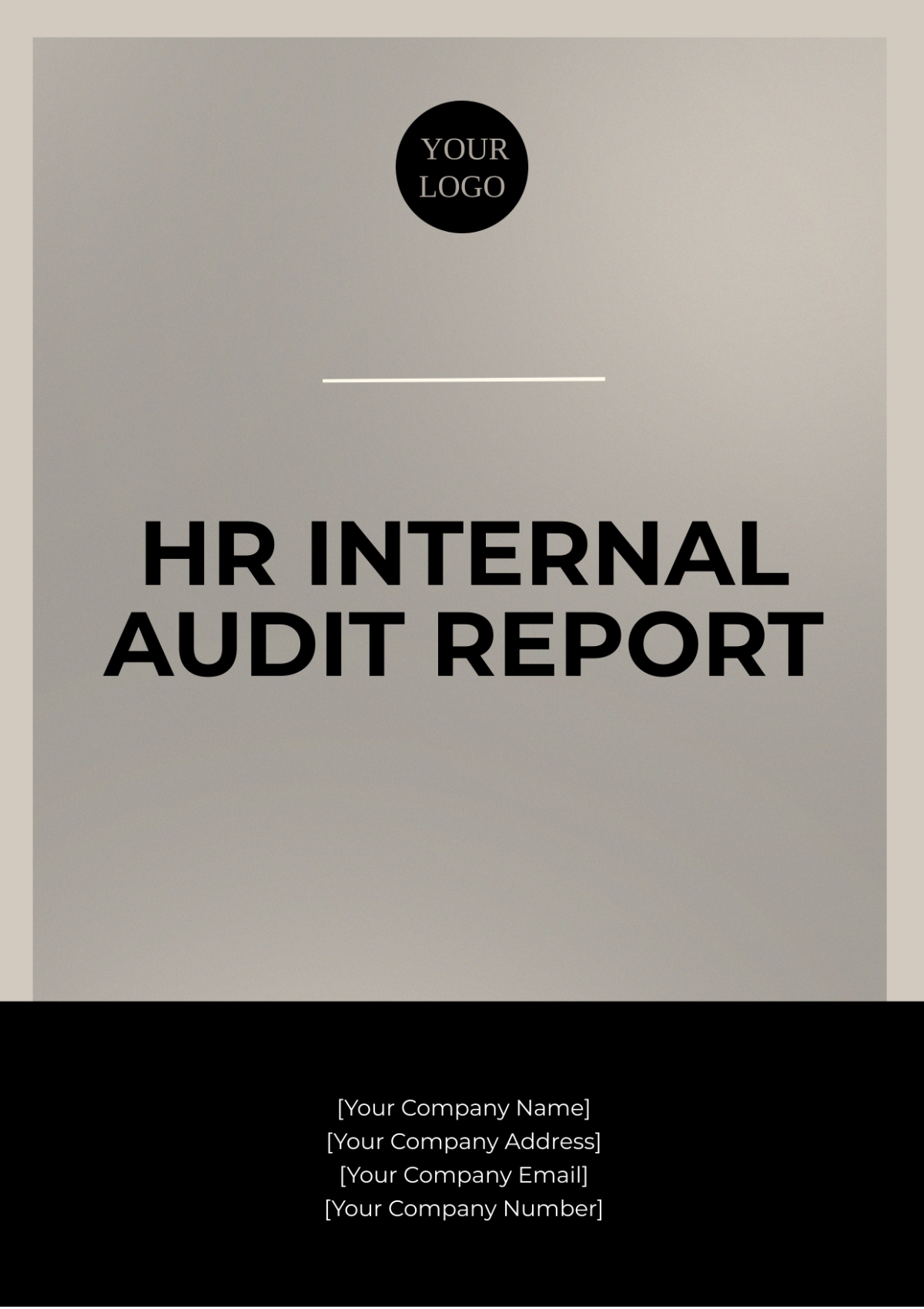HR REPORT OUTLINE
I. Introduction
A. Overview
The HR report aims to provide a detailed and comprehensive overview of the employee and administrative landscape within the organization. It covers several critical facets, including workforce demographics, recruitment and onboarding, training and development, employee satisfaction and engagement, and compliance and risk management. This report serves as a tool for decision-making and strategic planning, facilitating a deeper understanding of HR functions and their impact on the organization's success.
B. Purpose
The purpose of this HR report is to analyze current HR metrics, identify trends, and propose actionable recommendations to improve the overall HR function and support the organization's strategic goals. By leveraging data-driven insights, the report aims to enhance employee experience, optimize talent management, and align HR initiatives with broader business objectives.
II. Workforce Demographics
A. Age Distribution
Understanding the age distribution of employees is crucial for effective workforce planning and management. The following table illustrates the current age distribution across various departments, allowing us to assess generational diversity and potential skill gaps.
Age Range | Number of Employees | Percentage |
|---|---|---|
18-25 | 30 | 15% |
26-35 | 70 | 35% |
36-45 | 60 | 30% |
46-55 | 25 | 12.5% |
56+ | 15 | 7.5% |
B. Gender Distribution
The gender distribution within the company reflects our commitment to maintaining a balanced and inclusive workplace. While the current statistics indicate a reasonable distribution, ongoing efforts to promote diversity and inclusion remain essential.
Gender | Number of Employees | Percentage |
|---|---|---|
Male | 100 | 50% |
Female | 95 | 47.5% |
Other | 5 | 2.5% |
III. Recruitment and Onboarding
A. Recruitment Metrics
Understanding recruitment performance is crucial for enhancing hiring processes. The following metrics are evaluated to identify areas for improvement:
Time to Fill: The average number of days taken to fill a position, which helps assess the efficiency of the recruitment process.
Cost per Hire: The total cost associated with hiring a new employee, including advertising, recruitment agency fees, and onboarding expenses.
Quality of Hire: A measure of the performance and retention rates of new hires, indicating the effectiveness of selection processes.
B. Onboarding Process
An effective onboarding process is essential for setting the stage for new hire success. Our current onboarding includes:
Introduction to Company Culture: New hires participate in orientation sessions that familiarize them with organizational values, mission, and vision.
Role-specific Training: tailored training sessions that equip new employees with the necessary skills and knowledge specific to their roles.
Mentorship programs: pairing new employees with experienced mentors to provide guidance, support, and insights into company practices.
IV. Training and Development
A. Training Programs
The organization offers various training programs designed to enhance employee skills and performance, ensuring alignment with evolving industry standards. These programs include:
Leadership Development: focused on building future leaders through workshops, seminars, and coaching sessions.
Technical Skills Training: Programs that address the latest tools and technologies relevant to employees' roles.
Soft Skills Workshops: Training aimed at improving interpersonal skills, communication, teamwork, and emotional intelligence.
B. Employee Development Plans
Employee development plans are personalized to cater to individual growth and career aspirations, closely aligned with organizational goals. Key elements of a development plan include:
Goal Setting: Establishing clear, measurable objectives that reflect both individual and organizational aspirations.
Resource Allocation: Identifying the necessary resources, including training materials and funding, to support employee development.
Progress Review: Regularly scheduled evaluations to assess progress towards goals, allowing for adjustments to the development plan as needed.
V. Employee Satisfaction and Engagement
A. Employee Satisfaction Survey Results
The results from the recent employee satisfaction survey provide insights into the overall morale and engagement levels within the organization. Key findings include:
Overall Satisfaction: 85%
Engagement Level: 78%
Areas for Improvement: Notable concerns were raised regarding communication and career development opportunities, highlighting areas that require strategic focus.
B. Engagement Activities
To enhance employee engagement and foster a positive workplace culture, the following activities are currently in place:
Monthly Team Building Events: Activities designed to strengthen interpersonal relationships and encourage collaboration among team members.
Recognition Programs: initiatives to acknowledge and reward employee achievements, fostering a culture of appreciation and motivation.
Wellness Initiatives: Programs aimed at promoting physical and mental well-being, including fitness challenges, wellness workshops, and stress management resources.
VI. Compliance and Risk Management
A. Regulatory Compliance
Ensuring compliance with labor laws and industry regulations is critical for maintaining organizational integrity and mitigating risks. Our current compliance status includes:
Adherence to Local Labor Laws: Continuous monitoring of local regulations to ensure all HR practices align with legal requirements.
Regular Compliance Audits: Scheduled audits to evaluate adherence to compliance standards and identify potential areas for improvement.
Employee Training on Compliance Topics: Ongoing training programs to educate employees on compliance issues, ethical standards, and workplace policies.
B. Risk Management Strategies
Implementing effective risk management strategies is essential to mitigate potential HR-related risks. Key strategies involve:
Regular Risk Assessments: conducting thorough assessments to identify potential risks and vulnerabilities within HR processes and policies.
Implementing Mitigation Plans: Developing action plans to address identified risks and establish protocols for risk management.
Monitoring and Reviewing Risks: continuously monitoring the effectiveness of risk management strategies and adjusting them as necessary to adapt to changing circumstances.
